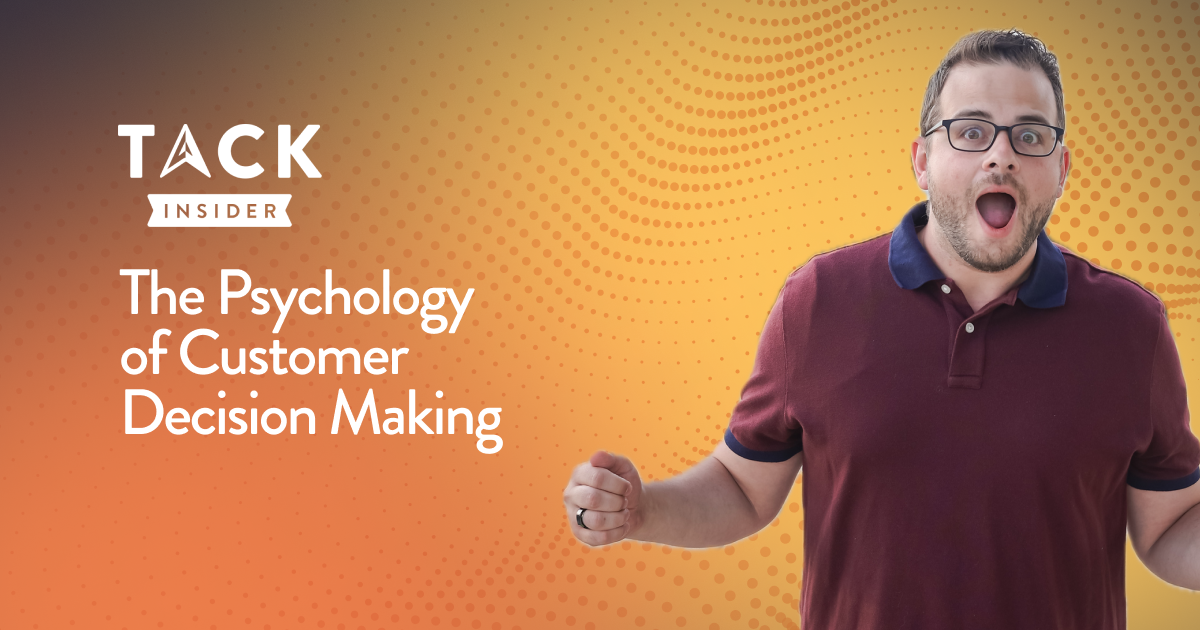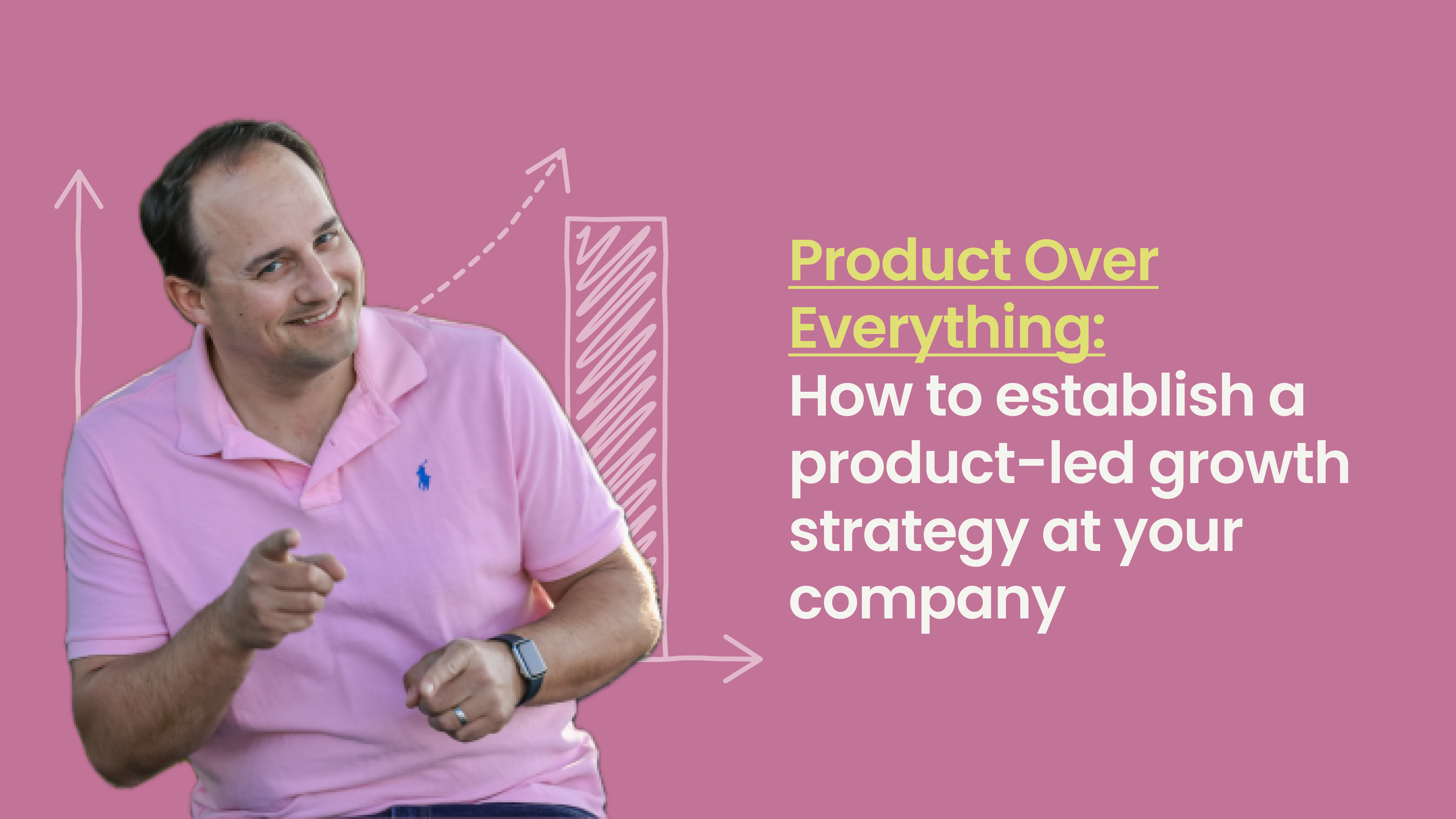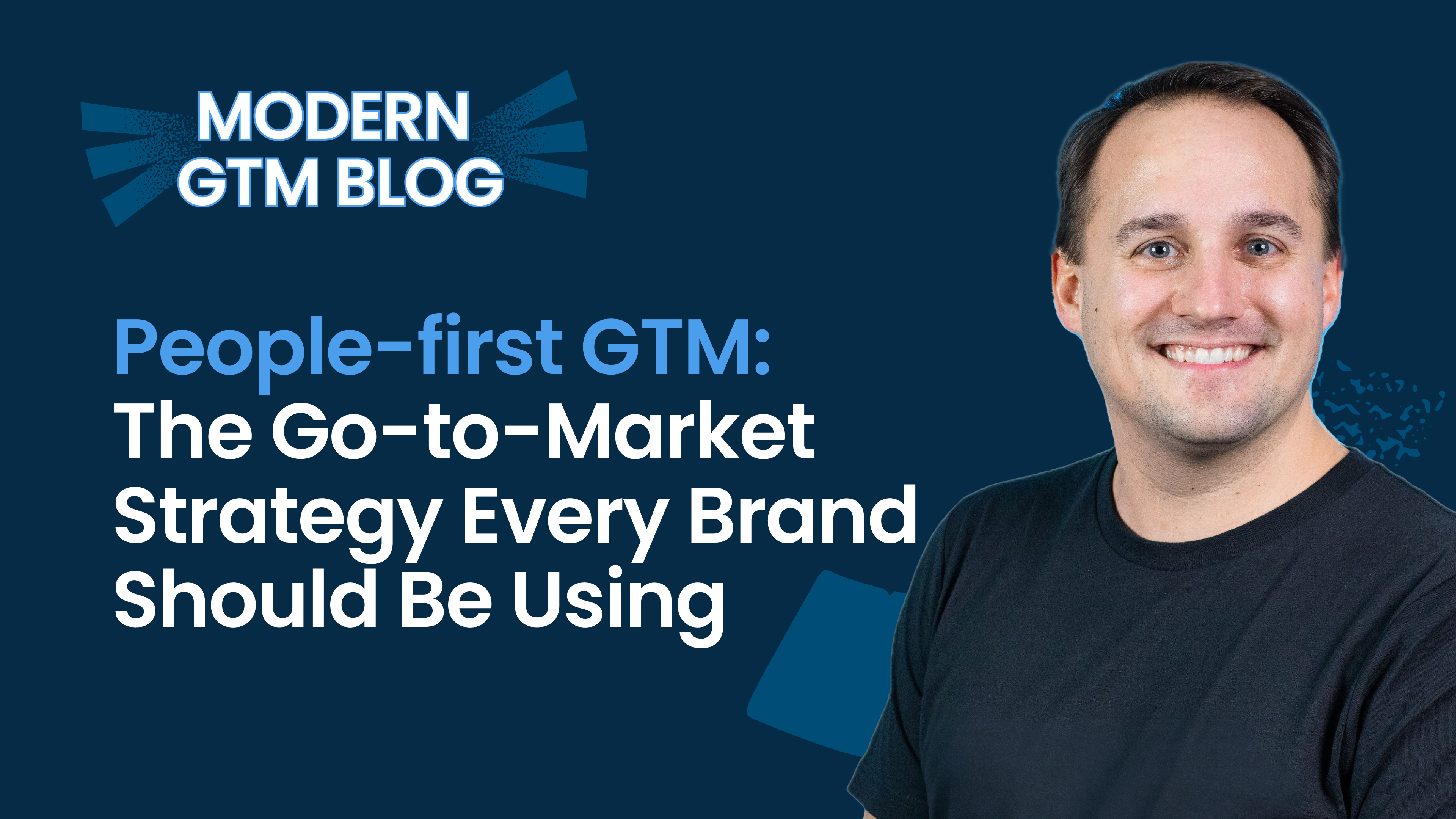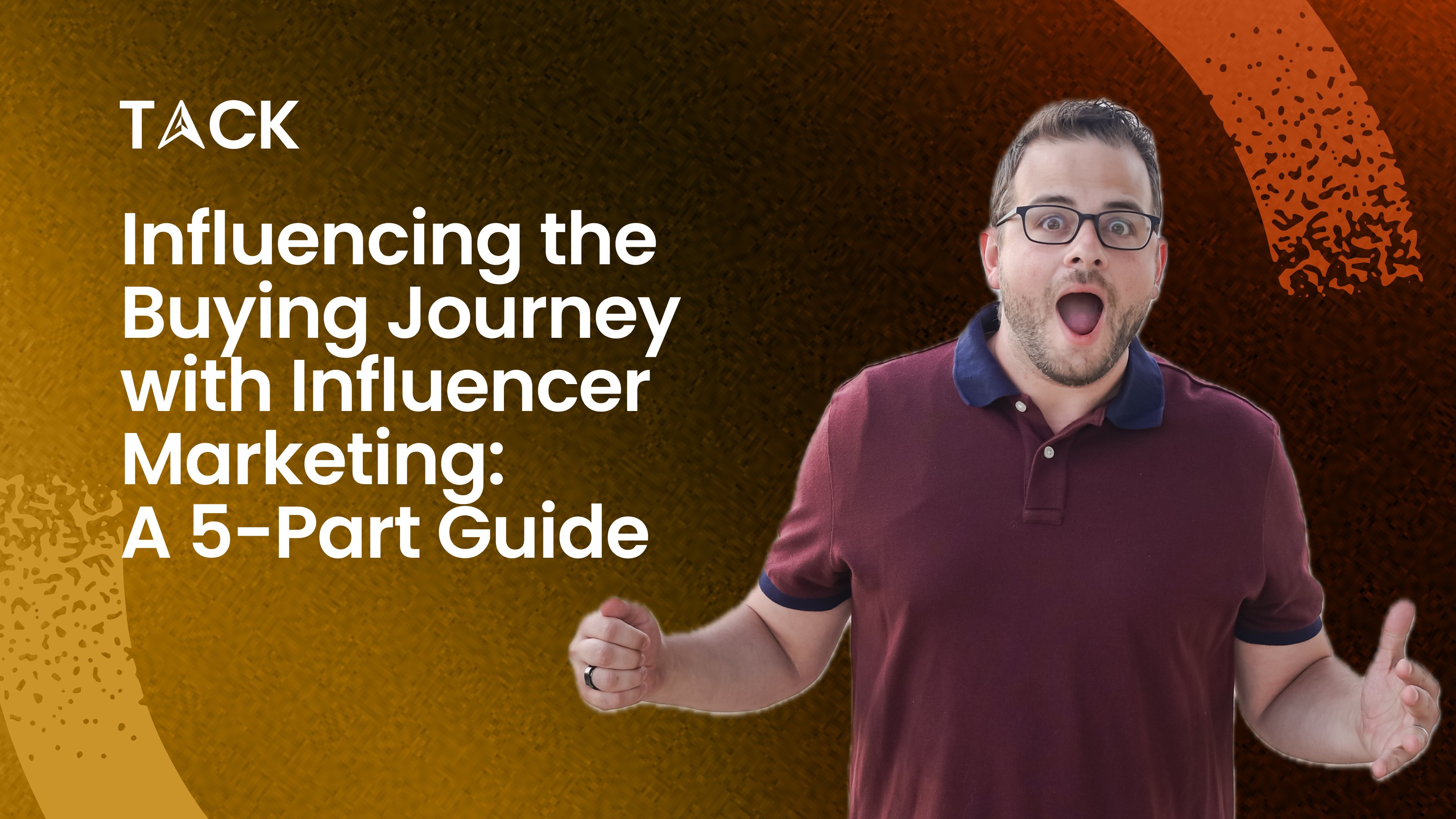What’s up! Welcome back to another week in people-first GTM land. The best place to be.
Here’s a situation many parents are familiar with: I'm standing in the toy aisle at Target, watching my 6-year-old daughter, Reese, navigate what might as well be the most important decision of her young life. Armed with her birthday money and a world of possibilities before her, she's deep in the throes of decision-making paralysis.
I watched for the next 20 minutes (which felt like 20 hours) as she picked up toys. First, a unicorn, then a LEGO set, put them down, compared prices, and even asked a nearby kid what they thought of a particular doll. At one point, she spotted a toy she might want, but only two were left, and we narrowly averted a meltdown, thinking she might miss out on the next great toy innovation.
While I stood there caught between amusement and a desperate desire for a coffee, there’s one reason I’m telling you this story.
The psychology of buying decisions (choice paralysis, social proof, scarcity) played out in miniature in Target's toy aisle. And you know what? These same principles must be understood.
After all, your potential clients are navigating complex decisions influenced by factors far beyond just features and benefits.
So, let's examine some key psychological principles that can sharpen the edge of your GTM strategy.

The Power of Behavioral Insights in People-first Marketing
Early in my career, I was all about product features and benefits. I thought clients would come running if I could list enough cool things about our software.
Spoiler alert: they didn't. It wasn't until I started paying attention to how people actually make choices—much like my little girl in Target—that I saw a dramatic shift in our marketing effectiveness.
Here's the deal: consumer decisions, whether a 6-year-old chooses a toy or a CEO selects a software solution, are influenced by far more than just a list of features. How choices are presented, the opinions of others, the fear of missing out—all these factors play a huge role. By tapping into these insights, we can align our marketing efforts with the way people actually think and act.
This is the essence of our
People-first GTM model.
Let me walk you through three key behavioral principles and how they can enhance your marketing strategy.
Choice Architecture: Less is Often More
Remember how overwhelmed Reese was in that toy aisle? That's exactly how our customers feel when we bombard them with too many options. I used to think that offering more choices was always better. "Give the customer everything they could possibly want!" was my mantra. But I was dead wrong, and it cost us conversions.
Barry Schwartz's
research on the paradox of Choice
shows that too many choices can lead to lower satisfaction and decision paralysis. I've seen this play out repeatedly in my own campaigns.
Here's a real-world example from my time at PlanGrid, the construction productivity software company later acquired by Autodesk. We initially offered six different pricing plans, each with various add-ons and optional modules. We thought this level of customization would be perfect for the diverse needs of construction projects. In reality, it led to decision paralysis. Our conversion rate from pricing page visits to trial sign-ups was at a measly 3.2%.
Working with our leadership and marketing teams, we simplified our offering to just three options: "Basic," "Advanced," and "Premium." Each plan was tailored to a specific project size and complexity. The results? Within three months, our trial sign-up conversion rate more than doubled to 7.8%, and our average sales cycle shortened by 40%. This experience drove me to the power of simplifying choices in B2B software.
Our job as marketers is not to provide more choices but to curate and simplify. It's about guiding customers to the best decision, not overwhelming them with options.
Actionable Tip: When creating content or designing your product experience, focus on simplicity. Develop cornerstone assets that bring your brand story and point of view to life, addressing key pain points for specific personas. In your product, create a guided experience that showcases your core value quickly without overwhelming users with every feature.
Social Proof:
Word of mouth still reigns supreme
Remember how Reese asked that other kid in the aisle what they thought of the doll? That's social proof in action and is just as powerful in the B2B world.
I used to be skeptical about the impact of testimonials and reviews. "People will make their own decisions," I thought. But I couldn't have been more mistaken.
A
BrightLocal survey
found that 50% of consumers trust online reviews as much as personal recommendations. This statistic hit home for me when we implemented a robust review system for our product.
At Alyce, an AI-powered gifting platform (Which was acquired by Sendoso a few months ago), we launched "Gifting Intelligence" but struggled with adoption. To boost traction, we leveraged customer testimonials. We featured five early adopters' video stories and case studies on our landing page and in email campaigns. These weren't just generic praise; they included specific wins like a "40% increase in meeting acceptance rates."
The results were tangible: we saw a 12% increase in demo requests for Gifting Intelligence in the following month. This wasn't an overnight miracle, but a steady improvement that continued, leading to an 18% increase in feature adoption over the next quarter.
I'm convinced that social proof is not just a nice-to-have but a must-have. In the B2B world, where decisions often involve multiple stakeholders and significant investments, the reassurance that others have successfully used and endorsed your product is invaluable.
Actionable Tip: Leverage the power of your community and partnerships. Collaborate with industry influencers, creators, and complementary brands to amplify your message and provide social proof. Share customer stories and case studies prominently in your marketing materials.
Scarcity and Urgency: The FOMO Factor
That toy with limited stock that nearly sent Reese into a frenzy? That's the power of scarcity and urgency at work. I used to think that creating artificial scarcity was manipulative. But I've realized that when done ethically, it's actually about helping customers make timely decisions that benefit them.
Research shows that scarcity can increase the likelihood of impulse purchases. But in B2B, it's not about impulse—it's about motivating action on decisions that prospects are already considering.
We once launched a new feature with unlimited access for the first 100 sign-ups. The response was overwhelming. Not only did we hit our target quickly, but the buzz it created led to a surge in interest that lasted well beyond the initial offer.
When genuine, scarcity and urgency serve both the business and the customer. It's not about creating false pressure but about clearly communicating real limits or time-sensitive opportunities.
Actionable Tip: Incorporate authentic scarcity and urgency into your marketing strategy. This could be through limited-time offers, exclusive access to new features, or spots in a high-value workshop. Remember, the key is to make these offers genuinely valuable and limited in availability.
Wrapping Up: The People-first Approach
After years in the trenches of B2B marketing, I'm more convinced than ever that understanding the psychology of decision-making is the key to creating GTM strategies that truly resonate. This is the heart of our People-first GTM model at
TACK.
These principles—Choice Architecture, Social Proof, and Scarcity/Urgency—aren't just theoretical concepts. They're practical psychological principles that can transform your effectiveness when applied thoughtfully across your marketing efforts.
I encourage you to test these principles in your own strategies. Start small, measure the results, and iterate. You might be surprised at how small changes in how you present information and options can lead to big changes in customer behavior.
Remember, at the end of the day, we're not just selling products or services. We're helping people make decisions that hopefully improve their lives or businesses. By understanding the psychology behind those decisions and putting people at the center of every interaction and experience, we can do that job even better.
Here's to creating People-first strategies that truly connect with people!
Till next week
Nick
P.S. Want to dive deeper into People-first GTM? Join us at TACK Insider, our community for marketers and entrepreneurs pioneering this approach. We've got daily insights, weekly masterclasses, and a whole lot more. Check it out at
www.tackinsider.com

This week’s member spotlight
Member Spotlight:
Vivek Nanda
make sure to give him a follow on LinkedIn for some fire content.
Title: Chief Growth Officer Company: SwiftShift
Recent Achievement: Just launched a new podcast -
theuprisingshow.com
-
Over 100 downloads
-
Approaching 100 YouTube subscribers
Key Insight from TACK Insider: B2B marketing is human-to-human marketing. The goal is to build trust and establish relationships with buyers. It's about the people for whom products are built, not just the products themselves.
Professional Advice: "There is a big difference between attention and trust. Getting attention is easier, but building trust isn't. Focus on forging trust-based relationships with your buyers - that's how you will win!"
Current Project: Building a health tech-focused media company to connect buyers and sellers without friction. Website:
tophealth.care






